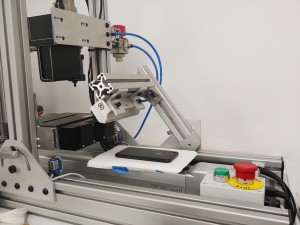
Researchers at the Massachusetts Institute of Technology (MIT) in the US have created the largest fully programmable nanophotonic processor to date. Comprising 88 minutely programmable beam splitters, the device enables scientists to study quantum transport effects to a degree of detail that had not been feasible before.
A fully programmable nanophotonic processor
“The programmable nanophotonic processor is an array of 88 Mach-Zehnder interferometers, 176 thermo-optic phase shifters and 52 optical modes implemented in the silicon photonics platform,” reports Nicholas Harris, a PhD candidate in Professor Dirk R Englund's Quantum Photonics Laboratory at MIT.
Each phase shifter can be programmed on microsecond timescales, enabling rapid exploration of experiments in both quantum and classical linear optics. “To control a processor of this size, we had to develop 240-channel, high-precision analog electronics and arrays of high dynamic range photodetectors,” says Harris, adding that efficiently coupling light to and from this processor required two more photonic integrated circuits that convert between the small optical fields on the chip and optical fields compatible with standard telecommunications optical fibers.
Pioneering precision
The researcher confirms that this groundbreaking work could help to catalyze developments in nanoelectronics and nanophotonics by unlocking the door to a deeper and even more detailed understanding of quantum transport effects. “We have demonstrated the largest optical processor to date and proved that it is compatible with single photons for precision experiments,” Harris says. “The scale and precision of this processor allow us to explore a large range of quantum transport regimes and in great detail.”
Simulating the evolution of a photon in time
For light, as Harris illustrates, space and time are fundamentally linked by the constant “c”. “As a result, we are able to simulate the evolution of a photon in time by interpreting the layers of the programmable nanophotonic processor as discrete steps in time.”
The researchers introduce disorder to the phase landscape the photons “see” as they travel through the processor by locally altering the speed of light in silicon via heating. “In one case, we varied the phase landscape in time, simulating environmental noise coupled to the system,” Harris says. “In another case, we held the phase landscape constant in time, but varied it randomly in the directions transverse to light propagation, simulating static disorder.
The MIT team was able to demonstrate a range of transport regimes, including:
- Ballistic transport in which particles diffuse rapidly from their initial position — a signature of coherent transport
- Exponential localization of particles to their initial position — a phenomenon known as Anderson localization and discussed in P.W. Anderson’s 1977 Nobel Lecture in the context of electrons traversing crystals
- Environment-assisted quantum transport in which particles that are initially localized can become unstuck through the addition of environmental noise. “We observed that there is an optimal strength of noise and that too much or too little resulted in relatively reduced transport from the initial position to a target position. This is known as the ‘quantum Goldilocks’ regime” Harris notes.
![]()
Key applications
As Harris notes, all linear optics circuits are described by unitary operators. “The programmable nanophotonic processor can implement all unitary operators,” he says. “Therefore, the PNP has a very broad range of applications in both classical and quantum information processing.“
Concurrently, Harris and his colleagues have also demonstrated deep learning in one of their programmable nanophotonic processors, as they report in Nature Photonics.
Impact on the design of future light technologies
Demonstrating “quantum supremacy” — the first computation enabled by quantum physics that is intractable for a classical computer — is a central goal in the field of quantum photonics. Harris notes that one proposal, known as Boson Sampling, requires the development of extremely large linear optical networks that accurately implement specific mathematical operations. “With the programmable nanophotonic processor, we were able to provide two data points towards this goal: 1) we demonstrated a new scale for linear optics circuits; and 2) with the ability to program the network to overcome intrinsic imperfections associated with its fabrication, we enable high-fidelity operations that may be necessary for Boson Sampling.”
Building every component from scratch with precision
“The concept was simple, but executing on it was extremely challenging,” the expert admits. The team built 240 channel voltage supplies with 16 bit precision — a system that is not sold by any existing vendors — as well as 32-channel photodiode arrays for reading out the system. Each channel has 18-bits of precision. “Again, control and readout systems of this scale are not commercially available,” Harris points out. “We had to build everything ourselves. Every component in the system was designed from the ground up.”
Outlook
In this work, Harris and his team have demonstrated the precision of the circuit and its compatibility with single-photon experiments. They are currently investigating experiments involving several indistinguishable photons traversing the processor. Moving along with this research, the team is planning to explore the non-classical transport characteristics of these particles.
The research is detailed in the article “Quantum transport simulations in a programmable nanophotonic processor," published in Nature Photonics.
Written by Sandra Henderson, Research Editor, Novus Light Technologies Today























 Back to Features
Back to Features





























